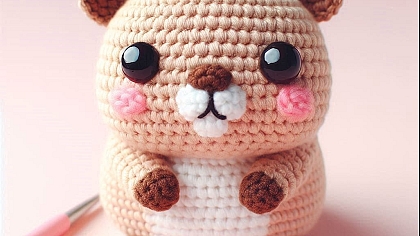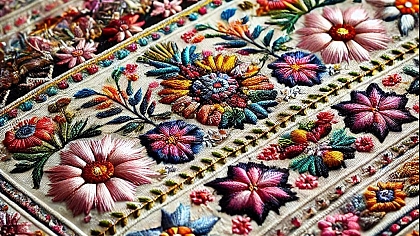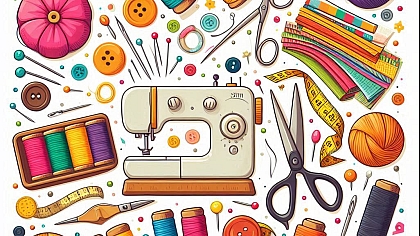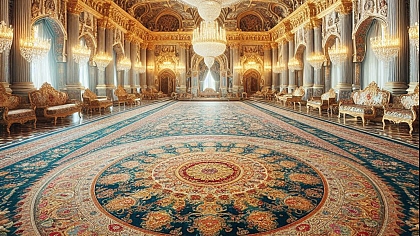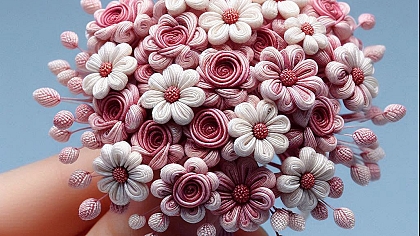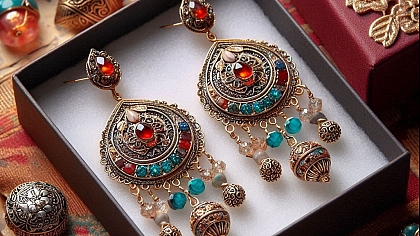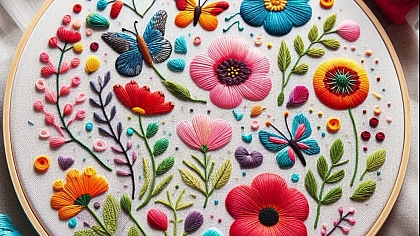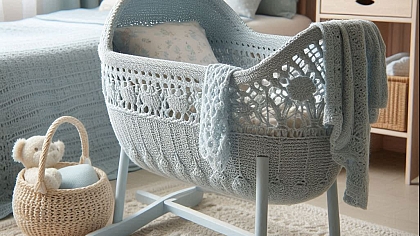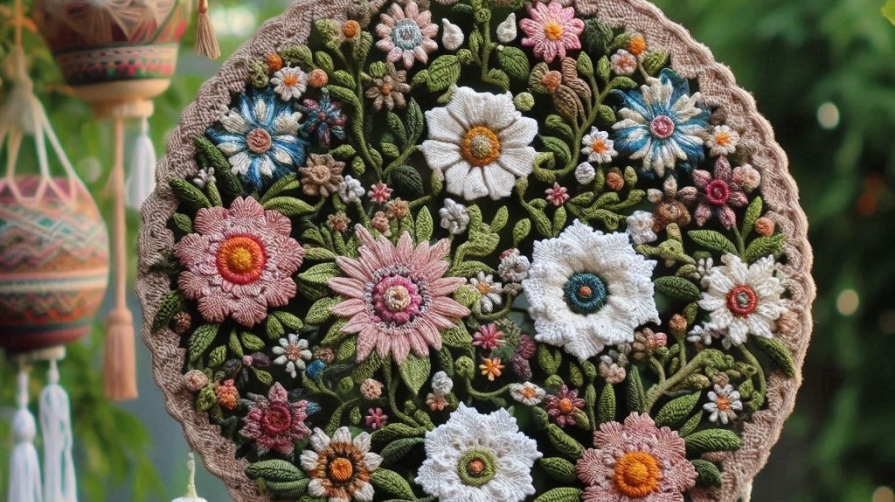
Crochet Garden: Beautiful Floral Designs
Crochet is a craft that has the magical ability to bring a simple strand of yarn to life, transforming it into something beautiful, intricate, and personal. One of the most enchanting aspects of crochet is its capacity to mimic the natural world. Among the myriad of patterns and motifs that can be crafted, floral designs stand out as particularly captivating. A crochet garden, where every stitch blossoms into a delicate flower, is a testament to the beauty and versatility of this art form. In this article, we will explore the creation of a crochet garden, delving into various floral designs, techniques, and inspirations that can help you cultivate your own yarn-based blooms.
The Inspiration Behind Crochet Floral Designs
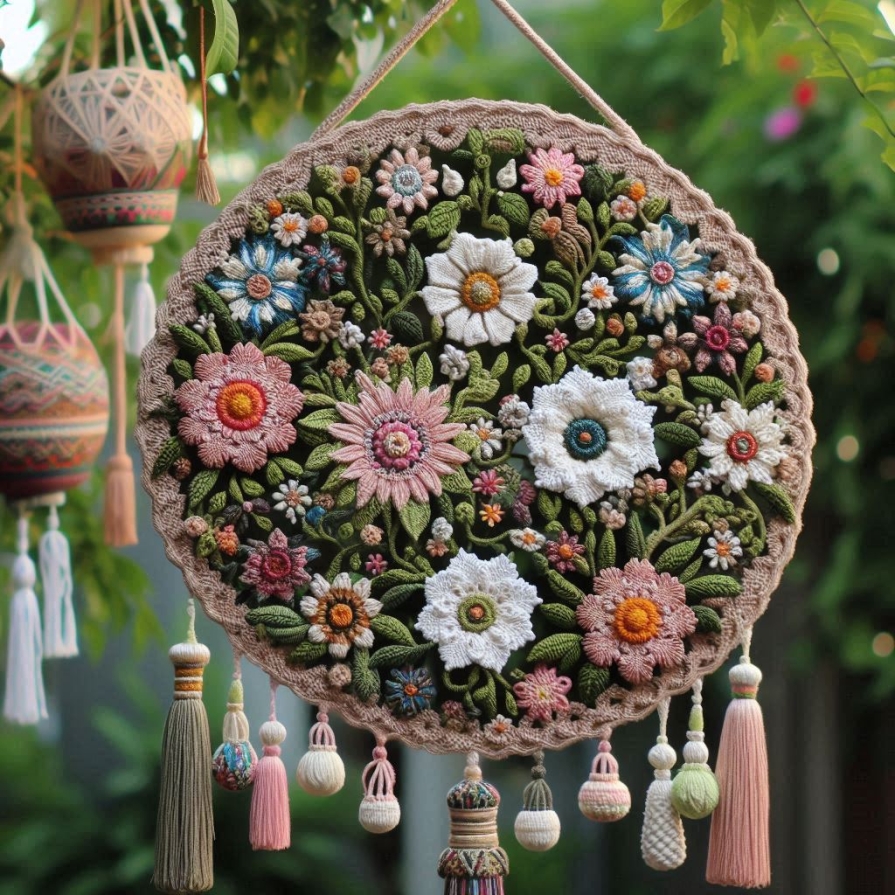
Flowers have always been a source of inspiration for artists, crafters, and creators. Their colors, shapes, and delicate structures make them an ideal subject for crochet. Each flower, from the simple daisy to the complex rose, offers a unique challenge to the crocheter, allowing for endless creativity and exploration.
The inspiration for crochet floral designs often stems from the natural world, where flowers bloom in a riot of colors and forms. A walk through a garden, a visit to a botanical garden, or even a glance at a bouquet can spark ideas for new patterns. The beauty of flowers lies in their diversity, and this diversity is reflected in the wide range of crochet floral designs that can be created.
Crocheters are often drawn to floral motifs because they offer a way to bring the beauty of nature into the home. Unlike real flowers, which eventually wilt and fade, crochet flowers remain vibrant and beautiful for years. They can be used to decorate clothing, accessories, and home décor items, adding a touch of nature’s beauty to everyday life.
Choosing the Right Yarn and Hook
The first step in creating a crochet garden is choosing the right yarn and hook. The type of yarn you choose will have a significant impact on the final appearance of your flowers. For delicate, realistic blooms, a lightweight yarn such as cotton or bamboo is ideal. These fibers have a smooth texture and a slight sheen that mimics the appearance of real petals. They also hold their shape well, which is important for creating intricate floral designs.
If you’re looking for a more whimsical, textured look, consider using a thicker yarn, such as wool or acrylic. These fibers can add a touch of softness and warmth to your flowers, making them perfect for creating cozy home décor items like blankets or pillows.
The size of your crochet hook will also affect the final appearance of your flowers. A smaller hook will create tighter, more compact stitches, resulting in a more detailed, intricate flower. A larger hook, on the other hand, will create looser, more open stitches, resulting in a softer, more delicate flower. Experimenting with different hook sizes can help you achieve the desired look for your crochet garden.
Basic Floral Crochet Techniques
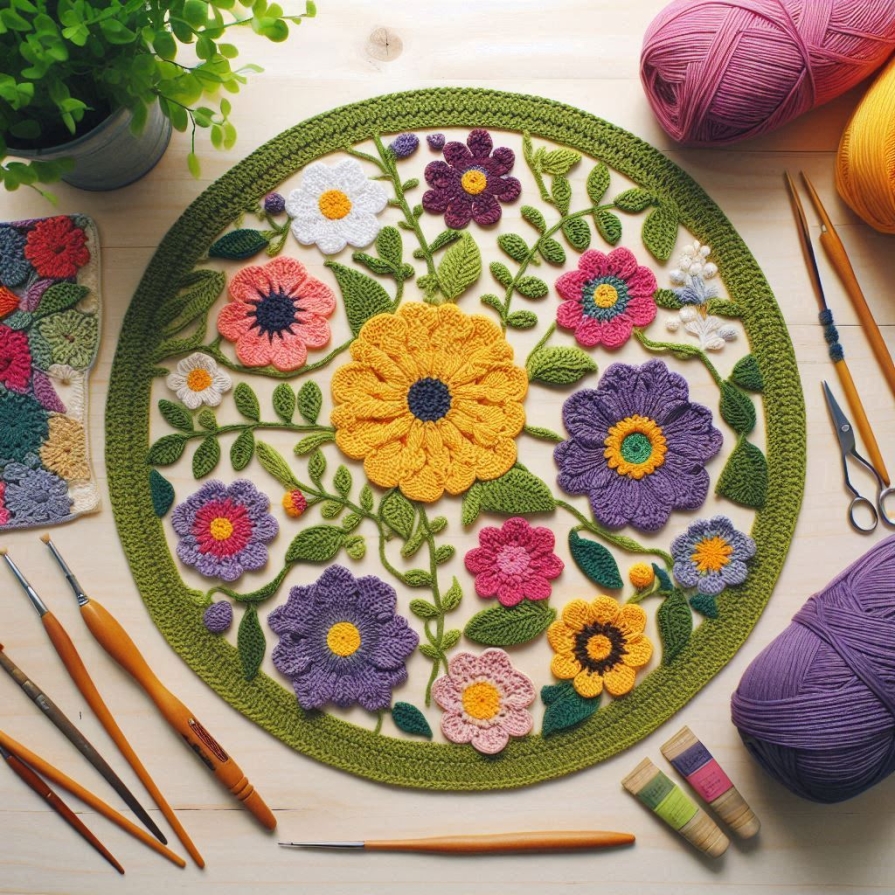
Before diving into complex floral designs, it’s important to master some basic crochet techniques that are commonly used in floral patterns. These techniques form the foundation of many floral designs and will help you create flowers that are both beautiful and structurally sound.
One of the most essential techniques for crocheting flowers is the magic ring. The magic ring is a method of starting a crochet project that allows you to create a tight, closed center, which is perfect for the center of a flower. To create a magic ring, simply loop the yarn around your fingers to create a small circle, then crochet the first round of stitches into this circle. Once the first round is complete, pull the tail of the yarn to tighten the loop, closing the center of the flower.
Another important technique is the picot stitch. The picot stitch is a small loop of chain stitches that is often used to create the points of petals or to add decorative detail to the edges of flowers. To create a picot stitch, simply chain three stitches, then slip stitch into the first chain stitch to form a small loop. The picot stitch adds a delicate, lacy texture to your flowers, making them look more realistic and detailed.
The puff stitch is another useful technique for creating floral designs. The puff stitch is created by yarn over and pulling up loops multiple times into the same stitch, then pulling through all loops on the hook. This creates a textured, raised stitch that is perfect for adding dimension to your flowers. The puff stitch can be used to create the centers of flowers or to add texture to the petals.
Simple Floral Motifs: Daisies and Roses
Daisies and roses are two of the most iconic and beloved flowers, making them popular choices for crochet floral designs. Their simple yet elegant forms make them perfect for beginners and experienced crocheters alike.
The daisy is a flower that symbolizes innocence and purity. In crochet, the daisy is often created using simple stitches and basic techniques, making it an excellent project for beginners. To create a basic crochet daisy, start with a magic ring and work a series of double crochet stitches into the ring to form the center of the flower. Then, create the petals by chaining a few stitches and working single crochet stitches back down the chain. The result is a simple yet charming flower that can be used in a variety of projects.
Roses, on the other hand, are a symbol of love and beauty. While roses are more complex than daisies, they are still achievable for crocheters of all skill levels. A basic crochet rose is created by working a series of chain stitches and double crochet stitches into a long strip, then rolling the strip into a spiral to form the shape of the rose. The petals of the rose can be shaped and adjusted as you roll the strip, allowing you to create a flower that is as full or as delicate as you desire.
Both daisies and roses can be used as standalone decorations or combined with other floral motifs to create more complex designs. They can be attached to hair accessories, sewn onto garments, or used to embellish home décor items such as cushions or tablecloths.
Advanced Floral Designs: Orchids and Lilies
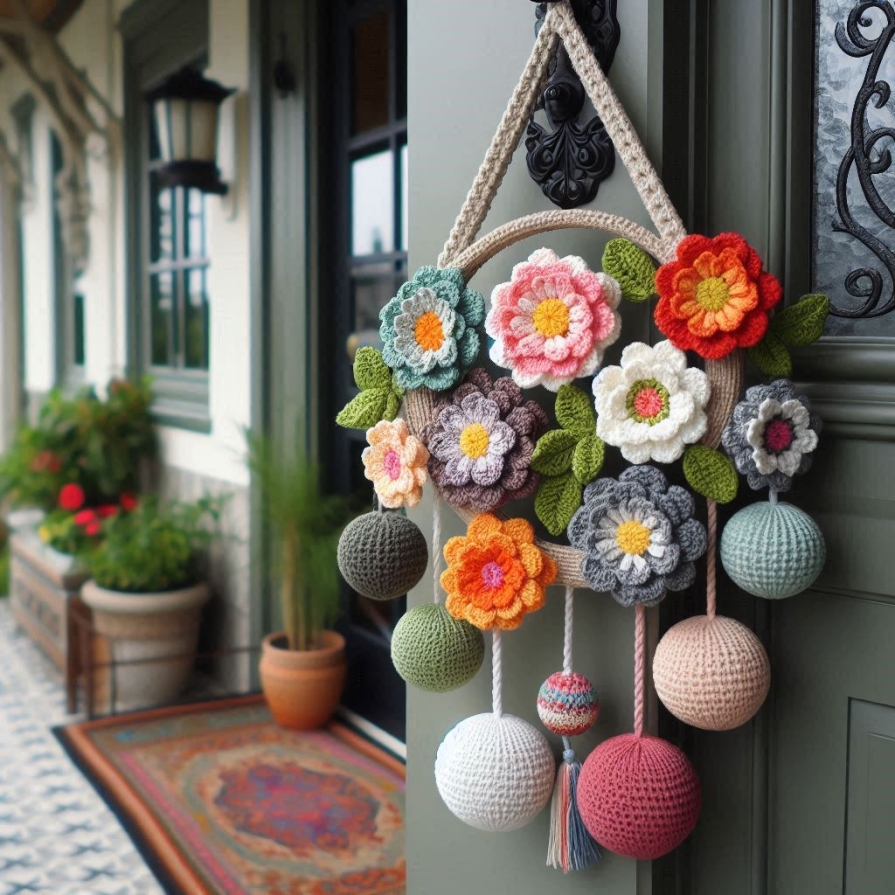
For those looking to challenge themselves and create more complex floral designs, orchids and lilies offer an opportunity to explore advanced techniques and patterns. These flowers are known for their intricate shapes and delicate details, making them perfect for experienced crocheters who are looking to push their skills to the next level.
The orchid is a flower that is known for its exotic beauty and unique shape. In crochet, orchids are often created using a combination of basic and advanced stitches to replicate their intricate petals. The petals of an orchid are typically created using a series of chain stitches, double crochet stitches, and picot stitches to form their characteristic pointed tips and curved edges. The center of the orchid, known as the lip, can be created using puff stitches or other textured stitches to add dimension and detail.
Lilies, with their trumpet-shaped blooms and graceful curves, are another popular choice for advanced crochet floral designs. The petals of a lily are typically created using a series of tall stitches, such as treble crochet or double treble crochet stitches, to give them their characteristic elongated shape. The petals can be shaped and molded as you crochet to create the natural curves and folds of a real lily. The center of the lily, with its prominent stamens, can be created using a combination of picot stitches and small loops of yarn to mimic the delicate structures of the flower.
Both orchids and lilies require careful attention to detail and a solid understanding of crochet techniques. However, the effort is well worth it, as these flowers are truly stunning when completed. They can be used to create statement pieces, such as brooches or hair accessories, or incorporated into larger projects, such as floral arrangements or wall hangings.
Combining Floral Motifs into Larger Projects
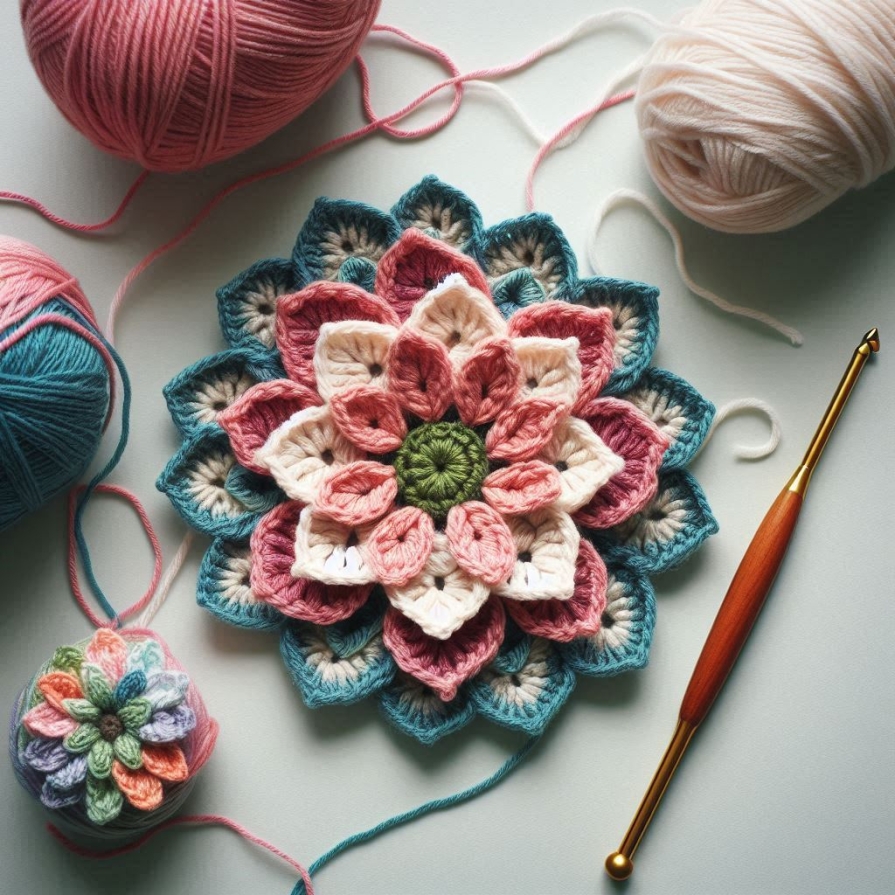
Once you have mastered the art of crocheting individual flowers, the next step is to combine these motifs into larger projects. A crochet garden is not complete with just a few flowers; it is the combination of different floral motifs that creates a rich, vibrant tapestry of color and texture.
One way to combine floral motifs is to create a floral wreath. A crochet wreath can be made by attaching individual flowers to a circular base, such as a foam ring or a crocheted ring. The flowers can be arranged in a variety of ways, from a simple row of daisies to a more complex arrangement of roses, orchids, and lilies. The addition of leaves, vines, and other greenery can add depth and realism to the wreath, making it a beautiful decoration for your home.
Another way to combine floral motifs is to create a floral garland. A crochet garland is a string of flowers that can be hung across a mantel, window, or doorway. To create a garland, simply crochet a series of flowers and leaves, then attach them to a long chain of stitches. The flowers can be spaced evenly along the chain or clustered together for a more organic look. A crochet garland is a versatile decoration that can be used for special occasions, such as weddings or parties, or as a permanent decoration in your home.
Floral motifs can also be used to create larger items, such as blankets or shawls. A crochet blanket made up of floral motifs is a beautiful and cozy way to bring the beauty of a garden into your home. The flowers can be joined together using a variety of techniques, such as slip stitches or whip stitches, to create a seamless, flowing design. A floral shawl, on the other hand, is a stylish and elegant accessory that can be worn year-round. The flowers can be arranged in a variety of patterns, from a simple row of daisies to a more complex arrangement of roses and lilies.
Personalizing Your Crochet Garden
One of the most rewarding aspects of creating a crochet garden is the ability to personalize it. Just as no two gardens are alike, no two crochet gardens need to be the same. You can personalize your crochet garden by choosing colors, patterns, and techniques that reflect your style and taste.
Color is one of the most powerful ways to personalize your crochet garden. While flowers
in nature come in a wide range of colors, your crochet flowers can be any color you choose. You can create a garden of pastel flowers for a soft, romantic look, or a garden of bright, bold flowers for a more vibrant, cheerful look. You can even create a monochromatic garden using different shades of the same color for a sophisticated, modern look.
The patterns you choose can also reflect your personal style. If you prefer a more traditional look, you might choose classic floral patterns, such as roses and daisies. If you prefer a more modern look, you might choose more abstract or stylized floral patterns. You can also mix and match different patterns to create a garden that is uniquely yours.
Finally, the techniques you use can add a personal touch to your crochet garden. For example, you might choose to add beads or sequins to your flowers for a bit of sparkle, or you might choose to use a different type of stitch, such as the popcorn stitch or the bullion stitch, to add texture and dimension. You can also experiment with different types of yarn, such as variegated yarn or textured yarn, to create a more interesting and unique look.
Caring for Your Crochet Garden
Once your crochet garden is complete, it’s important to care for it to ensure that it remains beautiful for years to come. Unlike real flowers, crochet flowers do not require watering or sunlight, but they do require some basic care to keep them looking their best.
One of the most important aspects of caring for your crochet garden is keeping it clean. Dust and dirt can accumulate on your crochet flowers over time, making them look dull and faded. To clean your crochet flowers, simply dust them off with a soft brush or cloth. If your flowers become heavily soiled, you can hand wash them in cold water with a gentle detergent, then lay them flat to dry.
Another important aspect of caring for your crochet garden is protecting it from damage. Crochet flowers can be delicate, so it’s important to handle them with care. Avoid pulling or tugging on the flowers, as this can cause the stitches to stretch or unravel. If you’re storing your crochet flowers, be sure to store them in a cool, dry place away from direct sunlight, which can cause the colors to fade.
Finally, if you’re using your crochet flowers in a project, such as a wreath or a garland, be sure to secure them properly to prevent them from becoming loose or falling off. Use strong, secure stitches to attach the flowers to the base, and consider using a fabric stiffener or starch to help the flowers hold their shape.
Cultivating Your Own Crochet Garden
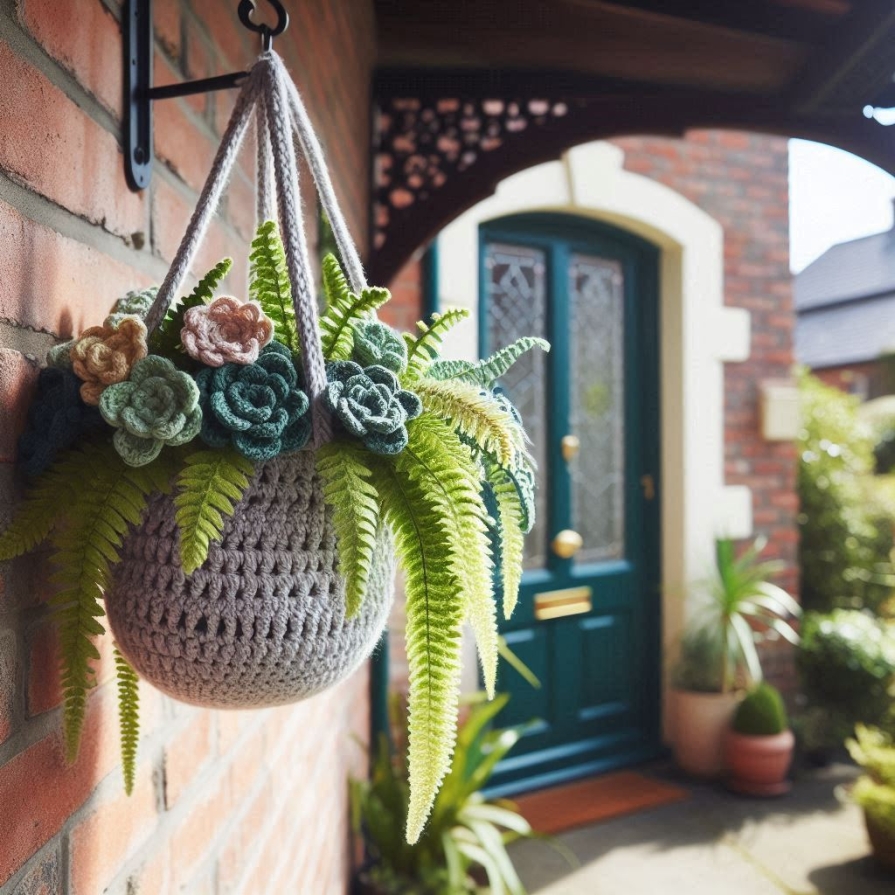
Creating a crochet garden is a rewarding and fulfilling project that allows you to combine your love of nature with your passion for crochet. Whether you’re a beginner just starting out or an experienced crocheter looking for a new challenge, there is a floral design that is perfect for you. By choosing the right yarn and hook, mastering basic and advanced techniques, and personalizing your designs, you can create a beautiful crochet garden that reflects your style and creativity.
A crochet garden is more than just a collection of flowers; it is a work of art that brings the beauty of nature into your home. Each flower is a testament to the skill, creativity, and care that went into its creation. So pick up your hook and yarn, and start cultivating your own crochet garden today. With each stitch, you’ll watch your garden grow and bloom, creating a lasting tribute to the beauty of nature and the joy of crochet.

